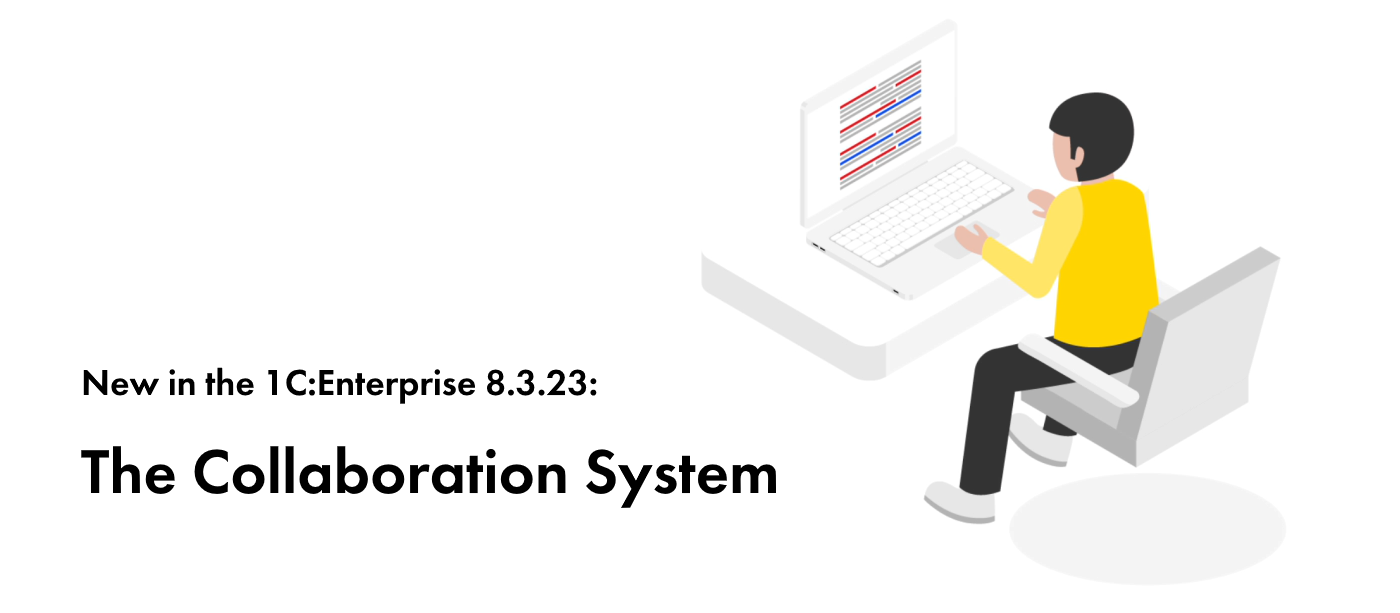
In response to numerous user requests, in version 8.3.23 we have expanded the functionality of the Collaboration System in part of integration with external systems.
WhatsApp Integration
Now the Collaboration System supports integration with WhatsApp Messenger.
It is important to know that WhatsApp integration requires you to have a WhatsApp business account. Such business accounts can be acquired from authorized providers. Detailed instructions for integrating with WhatsApp are included with the documentation.
Creating a business account takes some time. After setting up a business account, your provider sends a token that has to be entered into the Collaboration System settings for the respective integration. The providers' services fee-paying and it is the standard WhatsApp policy.
The WhatsApp integration that we provide is WhatsApp Business API (WABA), an interface officially recommended by WhatsApp for integration with third-party software.
Further communication with visitors who access chats via WhatsApp business account occurs similarly to other types of integration (VKontakte and Telegram). On the WhatsApp side, users communicate via a single business account, while in the Collaboration System, each user is seen individually. Each conversation gets a WhatsApp contact name in the upper part of the window and the respective Collaboration System integration name in the lower part.
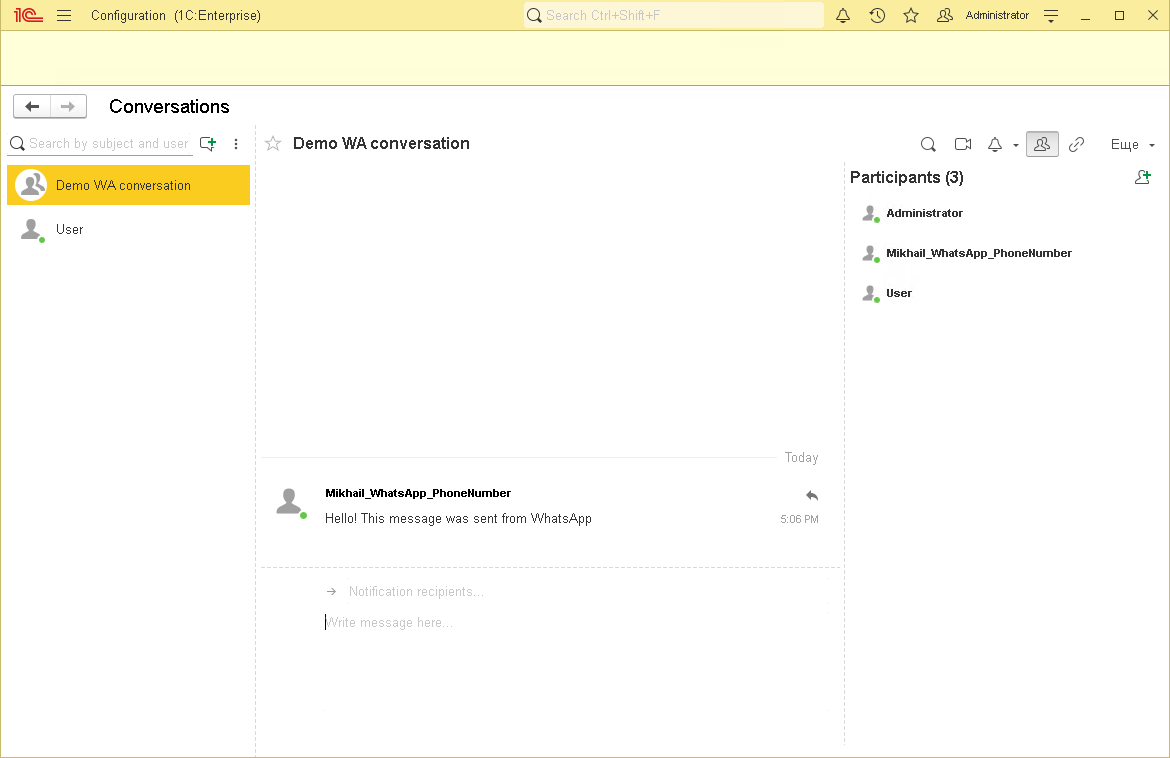
The 1C:Enterprise language has received new types and methods to support new functionality.
Since there are plenty of organizations that use WhatsApp as a channel to communicate with their customers, we hope that the new functionality will make the work of these organizations more convenient.
Support for File Handling in Integrations
The two-way exchange of attachments (files) between the Collaboration System and integrations with VKontakte and Telegram is now supported. File sharing for WhatsApp integrations is scheduled for the upcoming versions after 8.3.23.
Embedding the Collaboration System Chats
In version 8.3.23 of the platform, the Collaboration System now allows embedding the Collaboration System chats into third-party sites.
This new functionality opens a path for several new scenarios involving the Collaboration System. For example, it will be possible to embed the Collaboration System chat into the website of an online store. This way, the site visitors can communicate with managers who access the same chat via their corporate 1C application. In cases where a text chat is insufficient, it is possible to switch to an audio or video call. One more use case is a technical support service where team members can help customers handle their issues using audio/video calls and screen sharing. During office hours, company personnel can monitor the chat, while at nighttime, all customer requests can be managed by bots.
To enhance the functionality of embedded chats, we are introducing a new type of integration, namely, WebChat.
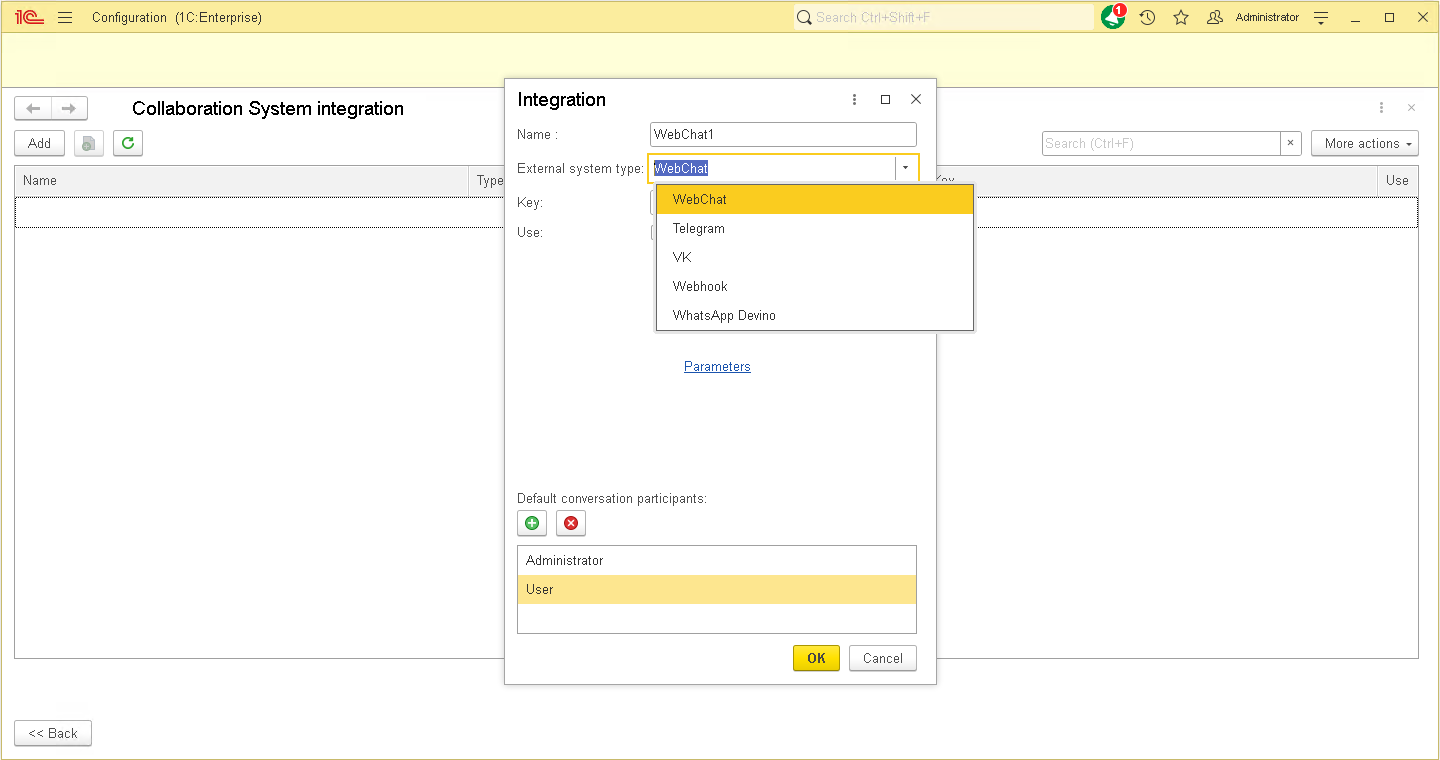
WebChat integration allows customizing the appearance (including color scheme) and position of the Collaboration System chat window on the site page. Additionally, it gives access to video calls and some other options.
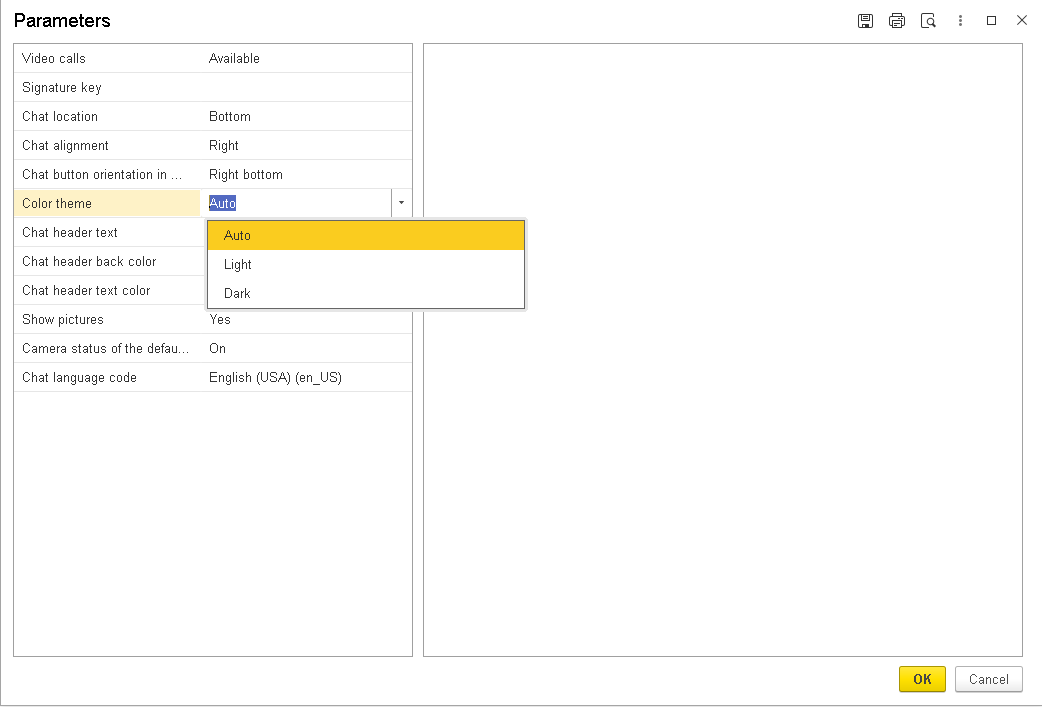
For the Collaboration System chat to appear on the site page, you need to add a script to the page code that contains the navigation link of the connection point of the respective Collaboration System integration. The text of the script is included with the documentation.
Chat users will have access to almost all the functionality of the Collaboration System, including file transfer, audio and video calls, and screen sharing.
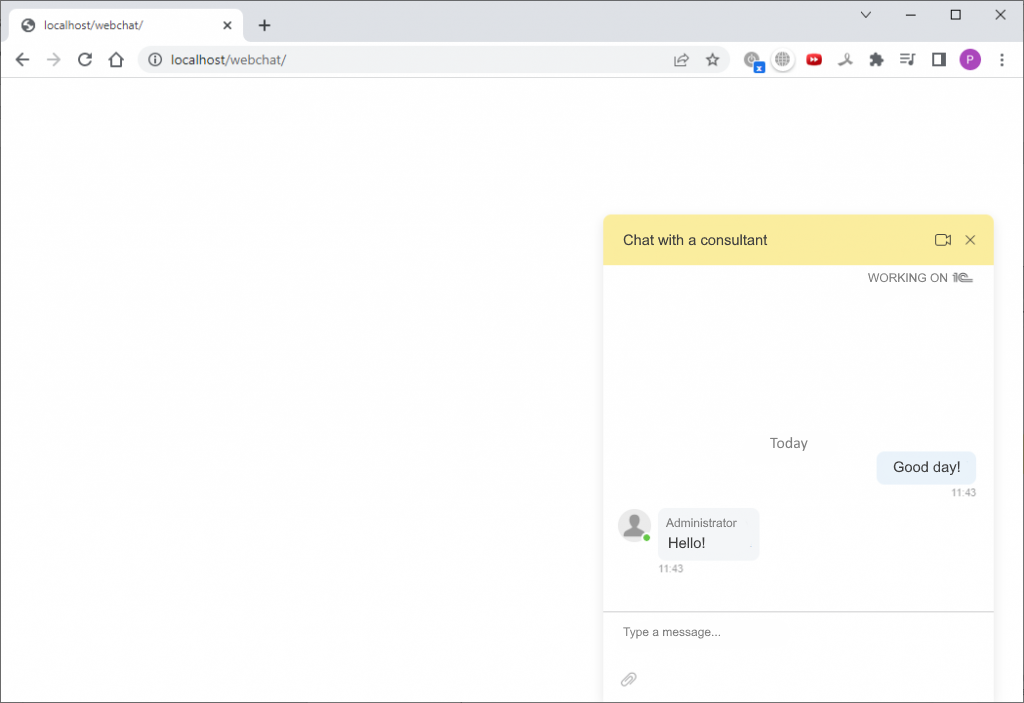
In the 1C application, the system generates unique names for users accessing chats from an external site, thus making it possible to uniquely identify each user. Also, the 1C application displays the address of the web page visitors used to access the chat.
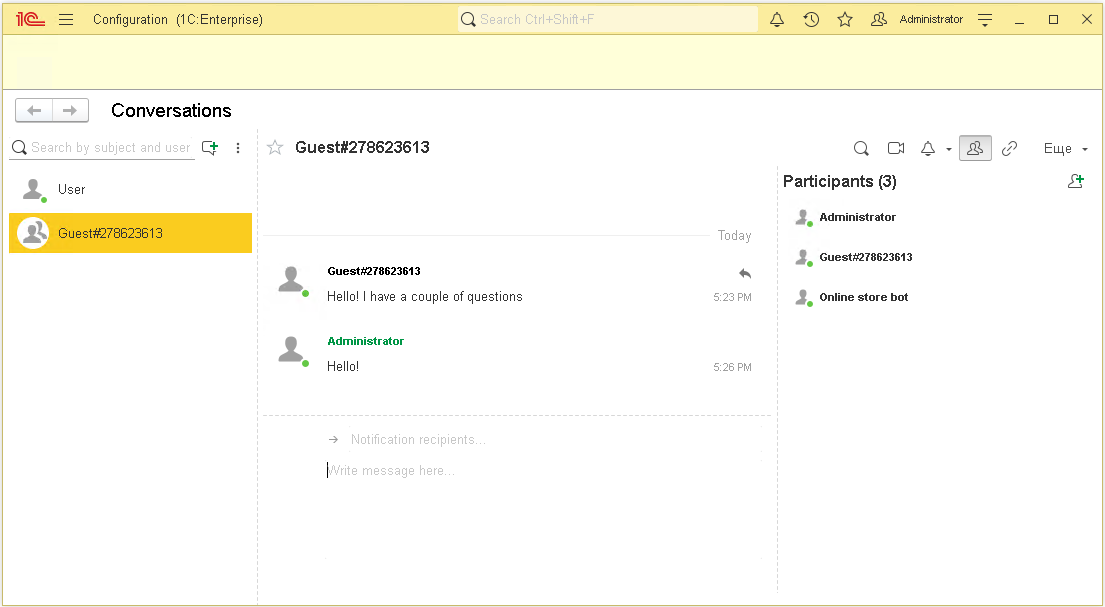
The 1C:Enterprise language has received new types and methods to support new functionality.
Starting with this version, we offer an API for external sites to access the Collaboration System via JavaScript and manage chat windows, send messages to chats, start video calls, add and receive the contact information of chat users, and similar. Using this API, you can also associate the chat with the authorization system of the site where the chat is embedded, thus allowing users to access their conversations from other devices and browsers. At that, managers using the 1C application will be able to identify external users as they chat.
Switching Calls to Other Devices
In previous versions of the platform, users were unable to seamlessly transfer ongoing calls to another device. And there are cases when it is absolutely necessary. For example
● A user needs to move from one computer to another.
● A user needs to move away from the main PC and it is more convenient to take a call from a mobile client.
In previous versions, users had to
● Leave a call.
● Ask someone in the chat to re-add them to the call.
● Pick a call from another device.
Version 8.3.23 added the ability to switch the call to another device. When a call is active, item Continue call on another device will appear in the Collaboration System menu.
A click on the message ends the call in this client application, and the platform sends an incoming call to all client applications (attached to a particular infobase) on all devices where this user is authenticated (to make it simple we will refer to them as "client applications"). The user will be able to answer the call on any client application and device of his/her choice.
There is also an alternative scenario. When a video call is active on all client applications not participating in this video call, the standard menu icon of the Collaboration System gets replaced with People with a handset icon:

Click on this icon and select "Continue call here".
The call gets switched to this client application.
This functionality works in thin, mobile, and web clients (currently, we support only Chrome and Firefox browsers).
Automatic Reconnection in Video Calls
It happens that during a call, the connection to the Internet might be lost. In version 8.3.23, we have introduced automatic connection recovery, which improves the convenience and quality of calls.
Automatic reconnection in video calls will work in thin, mobile, and web clients (currently, we support only Chrome and Firefox browsers).
Managing Video Quality in Calls
If network bandwidth deteriorates during a video call, the system downgrades the video quality, thereby offloading the communication channel to prevent the degradation of audio. Previously, the communication channel bandwidth recovery did not restore the quality of the video. In version 8.3.23, we have optimized the algorithm. With the network issues gone, the video gets automatically restored to the initial quality.
Implemented in thin, mobile, and web clients (currently, we support only Chrome and Firefox browsers).
Information about the Collaboration System
The Management of the Collaboration System function is now capable of displaying the following:
● Addresses of the Collaboration System server with the registered infobase
● Collaboration System server system
● E-mail addresses to which the infobase was registered
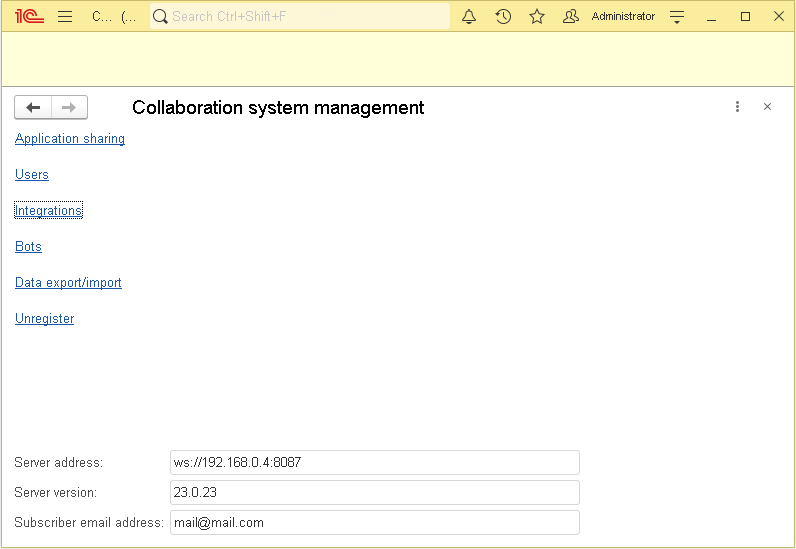
This information can also be obtained in the 1C:Enterprise language from the new properties of object CollaborationSystemManager.
This information will assist technical support and system administrators in diagnosing issues.




